Dvorak Symphony 9 From the New World Reviews
A quick overview of the near outstanding recordings of Dvořák's last, and most popular, symphony
Welcome to Gramophone ...
Nosotros have been writing nearly classical music for our dedicated and knowledgeable readers since 1923 and we would love you to bring together them.
Subscribing to Gramophone is easy, you can choose how yous want to enjoy each new issue (our beautifully produced printed magazine or the digital edition, or both) and also whether you lot would like access to our complete digital archive (stretching back to our very first effect in April 1923) and unparalleled Reviews Database, covering 50,000 albums and written by leading experts in their field.
To discover the perfect subscription for you, only visit: gramophone.co.u.k./subscribe
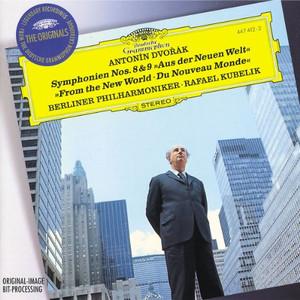
Symphonies Nos 8 & ix
Berlin Philharmonic Orchestra / Rafael Kubelík
DG
These accounts are quite magnificent, and their claims on the allegiance of collectors remain strong. Their freshness and vigour remind one of what information technology was like to hear these symphonies for the starting time fourth dimension. The atmosphere is authentic in feeling and the sense of nature seems uncommonly astute. Kubelík has captured the enthusiasm of his players and generates a sense of excitement and poesy. The playing of the Berlin Philharmonic is marvellously eloquent and, as is often the case, a joy in itself. The woodwinds phrase with nifty poetic feeling and imagination, and all the departments of this great orchestra reply with sensitivity and virtuosity.
The recording has great dynamic range and encompasses the most featherweight stringpianissimosto the fullest orchestraltutti without discomfort. The listener is placed well dorsum in the hall so that the woodwind, though they blend beautifully, may seem a little too recessed for some tastes, though information technology should be said that there'southward no lack of vividness, ability or bear upon. The balance and the timbre of each instrument is natural and truthful; nothing is made larger than life and Kubelík has a natural warmth and flexibility. This volition remain high on whatever listing of recommendations for it has a vernal freshness that'southward wholly reviving.

Symphonies Nos 1-ix
London Symphony Orchestra / István Kertész
Decca
István Kertész recorded the Dvořák symphonies in the mid-1960s and his integral cycle chop-chop achieved classic condition; his exhilarating and vital business relationship of the Eighth Symphony rapidly became a special landmark in the catalogue. The original LPs are at present collectors' items. These magnificent interpretations became available once more in 1992, in glitteringly refined digitally remastered sound, and it's a tribute to the retention of this tragically short-lived conductor that this wheel continues to set the standard past which others are judged. He was the commencement conductor to attract serious collectors to the early Dvořák symphonies and his jubilant advocacy of the unfamiliar Kickoff Symphony has never been superseded. This work offers surprising insights into the development of Dvořák's mature style, as does the Second Symphony. Kertész shows that Symphonies Nos 3 and iv accept much more earthy resilience than many commentators might have us believe, insisting that Dvořák'due south preoccupation with the music of Wagner and Liszt had reached its zenith during this period. The challenging rhetoric of the Fourth has never found a more glorious resolution than here, with Kertész cartoon playing of quite gripping intensity from the LSO. The Fifth Symphony and, to a still greater extent, the Sixth reveal Dvořák's clear analogousness with the music of Brahms. Kertész'southward superb reading of the 6th, however, shows merely how individual and naturally expressive this underrated work actually is, while the playing in the nifty climax of the opening movement and the vigorous final peroration remains tremendously exciting. In the great concluding trilogy, he triumphs nobly with the craggy resilience of the Seventh Symphony, and he brings a dynamic thrust and momentum to the Eighth. HisNew World is past turns indomitable and searchingly lyrical.
The vi-disc set up as well offers believing and brilliant readings of the OverturesCarnival, In Nature'south Realm and the rarely heardMy Domicile, together with a lucid and heroic account of theScherzo capriccioso. These definitive performances have been skilfully reprocessed, the sound is astonishingly expert, even by modern standards, and the playing of the London Symphony Orchestra is often daringly brilliant.
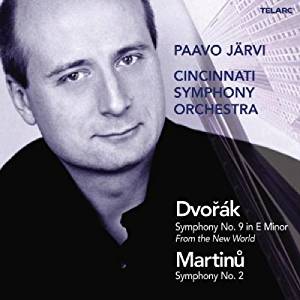
Symphony No ix withMartinů Symphony No 2
Cincinnati Symphony Orchestra / Paavo Järvi
Telarc
Having the most popular of Dvorák's symphonies coupled with one of the most outgoing by a 20th-century Czech composer is a bang-up and original thought, peculiarly apt as both works were written in the Us. Paavo Järvi reveals his keen imagination and sharp concentration in both performances and under his guidance the Cincinnati And so is consistently excellent: ensemble more than than matches that of the rival versions, including Järvi'south father Neeme in both works.
The quality of the playing is highlighted past the refinement and clarity of the brilliant Telarc recording, with cleaner separation than in any version listed. In the Martinu the Cincinnati operation easily outshines that of the Bamberg Then, which is non helped by a relatively distant recording, while the comparison with Bryden Thomson's potent and positive reading shows how well Paavo Järvi brings out the Czech flavours in the writing: the first movement is open up and fresh, with rhythms that echo Dvorák'due southSlavonic Dances.
In theNew World Symphony, too, Paavo Järvi is a caste warmer than his father, a shade readier to allow flexibility in tempo and phrasing simply never sounding self-witting or unspontaneous. Speeds are like between begetter and son, with István Kertész'south classic LSO reading a little plainer at speeds a fraction faster and with rhythms less lilting in theScherzo. Though there are many highly recommendable versions of this much-recorded work, this one is a strong candidate in every way; and, quite autonomously from the outstanding recording quality, has its unique coupling to commend it.
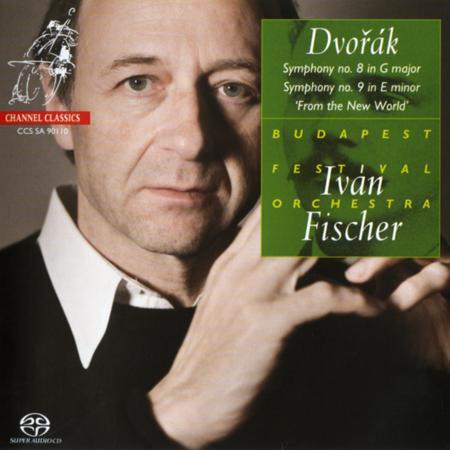
Symphonies Nos viii and 9
Budapest Festival Orchestra / Iván Fischer
Channel Classics
Fischer'due south highly recommended coupling of Dvořák'due south Eighth and 9th Symphonies returns under the Aqueduct Classics banner. The fashion of Fischer'due south Eighth is at times and so strong onportamento that you lot could as well be listening to an old Talich recording: buoyant, lyrical and localised in spirit. TheNew World – a very different sort of operation – is notable for its intensity, its energy and, as ever with Fischer, its nifty attending to detail. At that place isn't a more enjoyable digitalNew World on the current market. Both discs may be considered mandatory listening for anyone interested in Dvořák and the best of his modern interpreters.
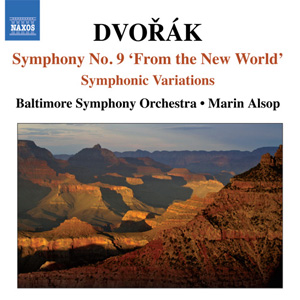
Symphony No ix. Symphonic Variations
Baltimore Symphony Orchestra / Marin Alsop
Naxos
Marin Alsop makes theNew Globe very much her own, her fine Baltimore orchestra responding with an account total of warmth and moments of high drama, and which is, above all, finely paced with a flowing, spontaneous feeling. Ane notes the delightful flute-playing, the bold, potent trombones intuttis, and the luminous grace of the strings, immediately apparent at the opening of both commencement and 2nd movements. The fragile shut of theLargo, subsequently the songful repeat of the cor anglais tune, is memorable. The motility's central episodes are equally poetic, particularly the gentle clarinet theme over murmuring basspizzicatos.
TheScherzo bursts in, and the finale has all the impetus one could desire. Nonetheless overall, Alsop's is not a histrionic reading just one full of affectionate touches, the appealing footling nudge at the end of the 2d subject of the kickoff move, for example, while the closing retrospective section of the finale is especially satisfying.
What makes this disc doubly recommendable is the superb business relationship of the Symphonic Variations, inspired but surprisingly neglected. It is a work which, afterwards the mysterious openingLento e molto tranquillo – perfectly captured here – needs to motility on flexibly just with plenty of impetus, capturing the continual changes of mood and color. The extraordinary diverseness of invention and scoring captivates the ear, sometimes perky, sometimes gentle (similar the enchanting piffling repeated-note flute solo, followed immediately by gruff trombones), until information technology reaches its genial fugal embodiment and the performance sweeps to its folksy, grandiloquent close. The recording is outstanding in every way, well balanced and brilliant in detail.
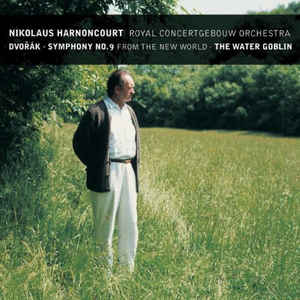
Symphony No 9. The H2o Goblin
Royal Concertgebouw Orchestra / Nikolaus Harnoncourt
Teldec
Harnoncourt has some distinguished Concergebouw forebears, not least construction-witting Sir Colin Davis and flammable Antal Dorati (both Philips). This, though, beats them all. Auspicious happenings register within the first few pages: carefully drawn woodwind lines, basses that calm meticulously from fiercefortissimo to tensepianissimo, provocative bassoons and an effortless passage into the lovely flute melody at two'58". At the start of the evolution section,piano violins really are playedleggiero (lightly), a significant detail that near rivals gloss over. Eye and lower voices are granted their full flavour and the violin desks are divided.
Harnoncourt'sLargo is something of a minor miracle. Undulating clarinets register against shimmering stringtremolandos and, beyond the beautifully judged arroyo to theMeno passage (bar 78), you of a sudden hear quiet second-violinpizzicato chords (7'00") that you almost never observe in concert. The finale itself never sags, and for the habitation straight Harnoncourt treads a course somewhere betwixt the printedAllegro con fuoco and the expressive broadening that Dvořák afterward sanctioned. Almost beauteous about Harnoncourt'south Dvořák is its close proximity to nature: barely a minute passes that isn't somewhere touched past verdure or sunshine.
Harnoncourt also gives u.s.The Water Goblin, the nigh folk-like of Dvořák's Erben tone-poems where, every bit in the Symphony, centre voices rise to the fore and the stamping outer sections are played with cracking rhythmic bite. If you think you know theNew Worldback-to-front, Harnoncourt will make you call back again.
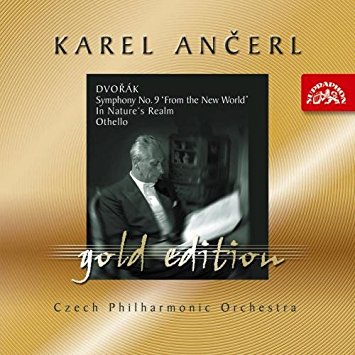
Symphony No 9
Czech Philharmonic Orchestra / Ancerl
Supraphon
A truly swell, remarkably unforced interpretation, consistently illuminating and displaying an atomic number 26 grip unmatched on disc.
Source: https://www.gramophone.co.uk/features/article/dvorak-s-symphony-no-9-from-the-new-world-a-quick-guide-to-the-best-recordings
0 Response to "Dvorak Symphony 9 From the New World Reviews"
Post a Comment